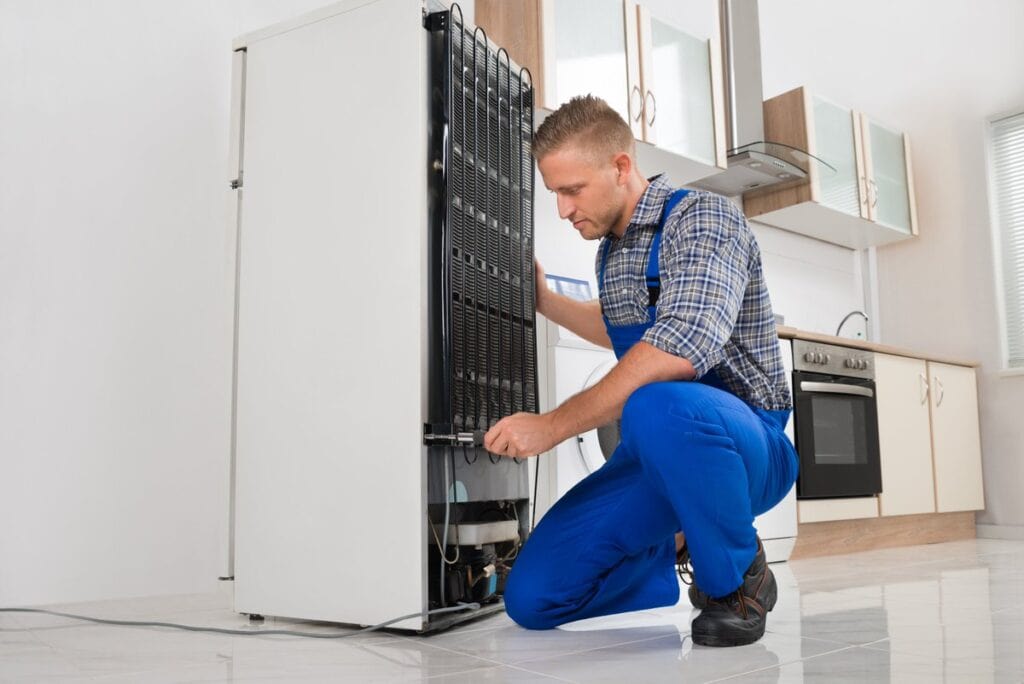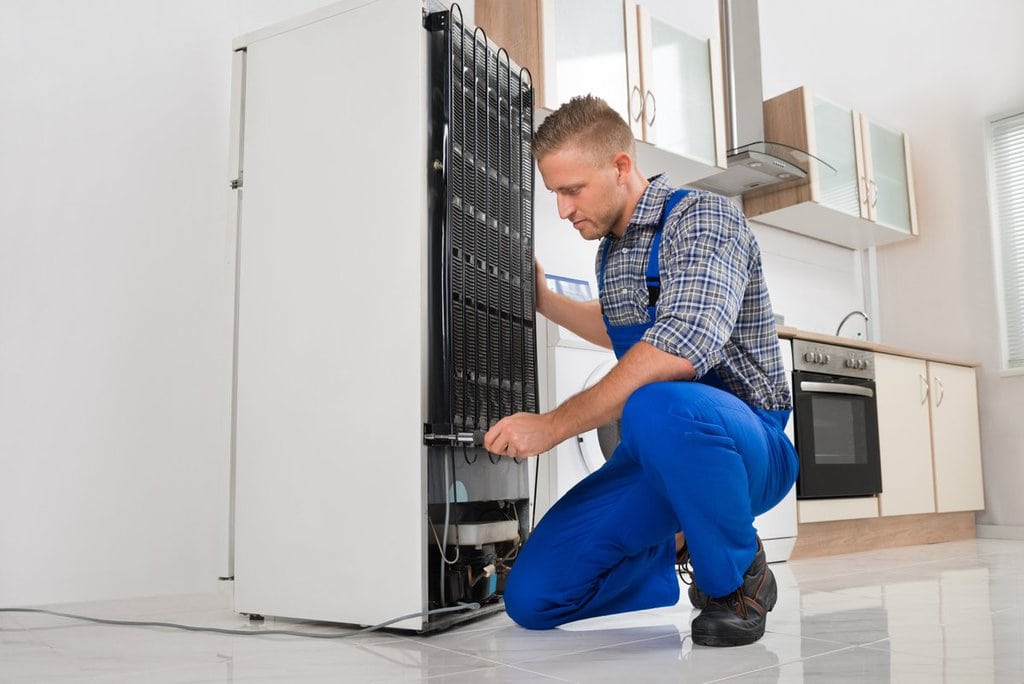The refrigerator is the most essential appliance in your entire household, and when it breaks down, you’re in crisis mode until you can get a repair. Without your refrigerator and freezer, you can’t provide some of your family’s most basic nutritional needs, so let’s talk about the different problems you might encounter with your refrigerator and what causes them. Some of them you can even fix yourself!

Table of contents
Common Refrigerator Repair Needs
There are a few different types of refrigerator issues you might be able to repair before you have to replace the appliance outright. However, some issues with your refrigerator will take the skills and expertise of an expert appliance repair service.
Refrigerators are bulky, heavy units with powerful electronic components inside of them, so it can be dangerous to attempt to repair many common problems on your own. If you need a refrigerator repair, calling a reputable appliance repair service is typically your best bet. A repair service doesn’t have to be expensive, and appliances are typically more complicated than most homeowners know what to do with.
However, you should try to get some idea of what’s wrong with your refrigerator before you call a repairman. Appliances have all sorts of repair needs, so let’s go over the different repairs appliance owners might face in the home.
Refrigerator Won’t Run At All
OK, so this one’s a little vague. But there are some really simple things to look for that might turn your refrigerator back on without needing to call appliance repair services. It might not be a problem with the appliance at all.
Check that your refrigerator is plugged in securely. A loose connection won’t provide enough power to turn the refrigerator on. If the connection is OK, the next place to look is the circuit breaker box. Refrigerators use a lot of power and can trip the breaker during a power surge.
Finally, test another electronic device in the same power outlet the refrigerator was using. If you’ve tried all of these steps and you’re able to draw power with a test device, then you know you need actual refrigerator repair services to troubleshoot further.
Humming, Rumbling, or Other Noises
Refrigerators naturally make noise, especially with automatic ice boxes and water lines. But if you hear a humming, rumbling, or buzzing, it could be one of a few issues.
Start with the icemaker. If this is the culprit, it’s the easiest thing to fix. If the icemaker tries to make ice with no water running to the refrigerator, it will make a loud noise. Turn off the ice maker and check that the water line is turned on under the sink. If it looks good, make sure that the water connection behind the fridge is secure and that there are no kinks in the line.
You might also need to level your appliance. Between your house settling and the legs on the refrigerator wearing, they occasionally need readjustment. If your appliance isn’t level, parts inside of it will bump together or hang at angles they aren’t supposed to which can cause unpleasant noises. If you’re having trouble keeping your refrigerator level, you can even purchase a special soundproofing mat that helps to keep your fridge nice and quiet.
If your refrigerator is still making noise, it’s likely a problem inside of it. At this point, your best bet is to call a service that specializes in appliance repairs. A repair service will be able to identify the different sounds refrigerators make and perform the appropriate appliance repairs.
Refrigerator Leaks
A leaking refrigerator is a problem no matter what the cause. There are three main suspects in these cases. The rubber gasket that forms a seal around the refrigerator door may be loose, disconnected, or worn out. If this is the case, reattach or replace the gasket. If the rubber gasket itself appears to be in good shape, then clean the area around the seal (and where it connects) with soapy water. If that fails, replace the gasket in this case, too.
The freezer has a drain that directs water out of the fridge. If ice blocks this pan, the water can leak out onto the floor. Consult your owner’s manual to determine the location of your freezer drain, and clear any ice out of it using warm water. Note: Always unplug your refrigerator before unscrewing any part of it, and do not touch any electrical components.
Failing those options, your refrigerator’s drain pan may be overflowing. In this case, all you have to do is empty the drain pan (and it’s a good idea to clean it each tie you do this). However, if you notice that your drain pan is filling often, it may indicate a larger problem with your refrigerator’s temperature control.
If your refrigerator is still leaking or this level of maintenance isn’t possible for you to perform, it’s time to call an appliance repair service. There are tons of home appliance repair services available with the experience to repair refrigerator leaks. Appliance repairs are sometimes beyond a homeowner’s skills and comfort. It’s never a bad idea to call an appliance repair service if you aren’t sure what to do with your refrigerator.
Refrigerator Door Doesn’t Seal
If your refrigerator door won’t seal, you’re in luck. This is one appliance repair you’ll be able to perform on your own in almost all circumstances. When your door won’t seal on the refrigerator or freezer, it’s typically a problem with the gasket. That’s the rubber and plastic piece that connects with the main unit when you shut the door.
Check that the gasket is aligned and that it sits firmly in place. If it isn’t, you can use some glue to reattach it to the door so it doesn’t hang free. If the gasket is tattered and worn out, it’s time to replace it. You can order replacement gaskets online, and they don’t necessarily need to be made for your model of refrigerator.
If your door still isn’t sealing, then the door itself may be misaligned. Check that the door hangs properly when you open and close it, and see if it closes itself or if it swings in the opposite direction. You may need to adjust the hinges holding the refrigerator door in place. Alternatively, this could be a sign that your refrigerator needs to be level as discussed above.

